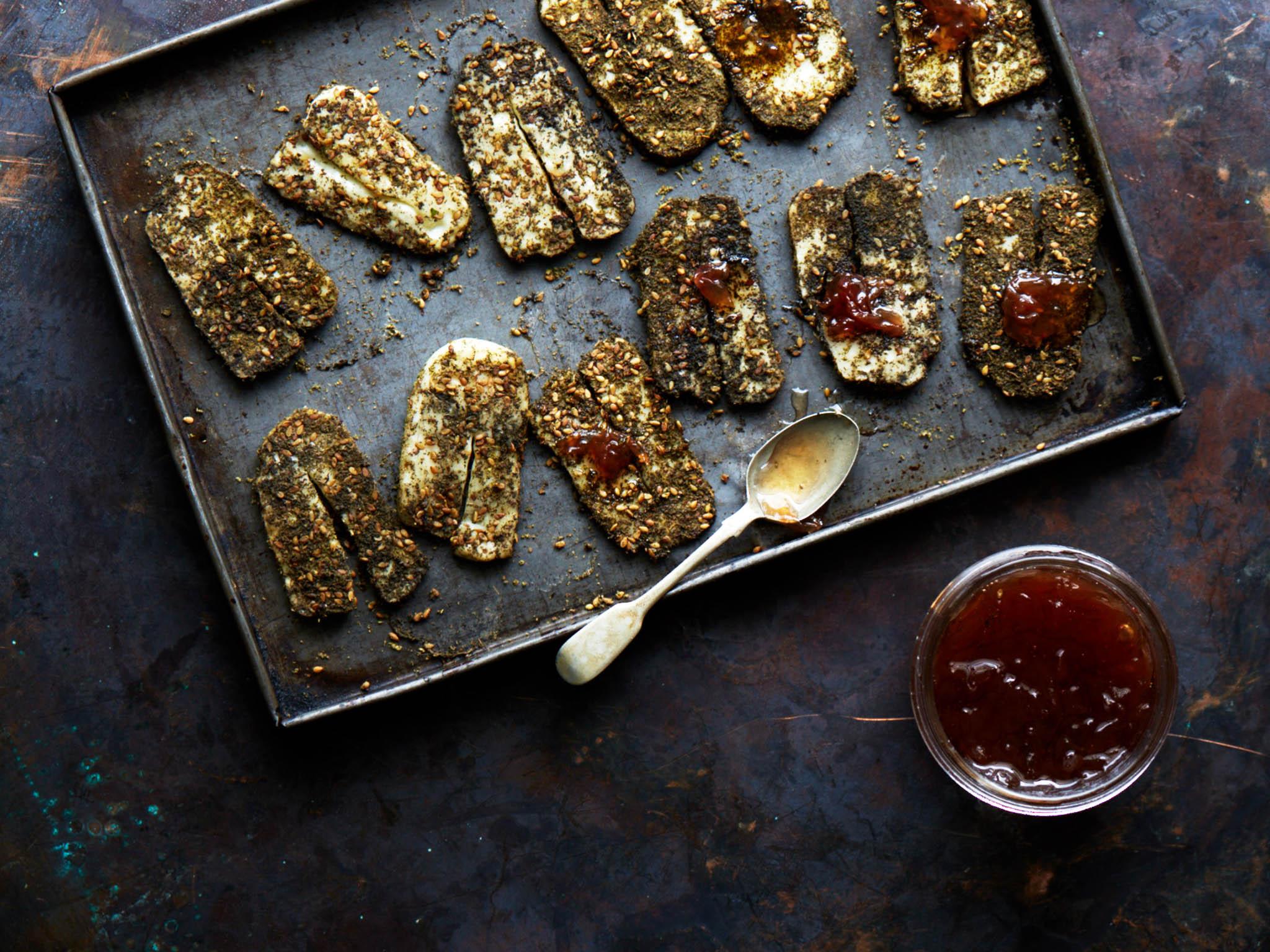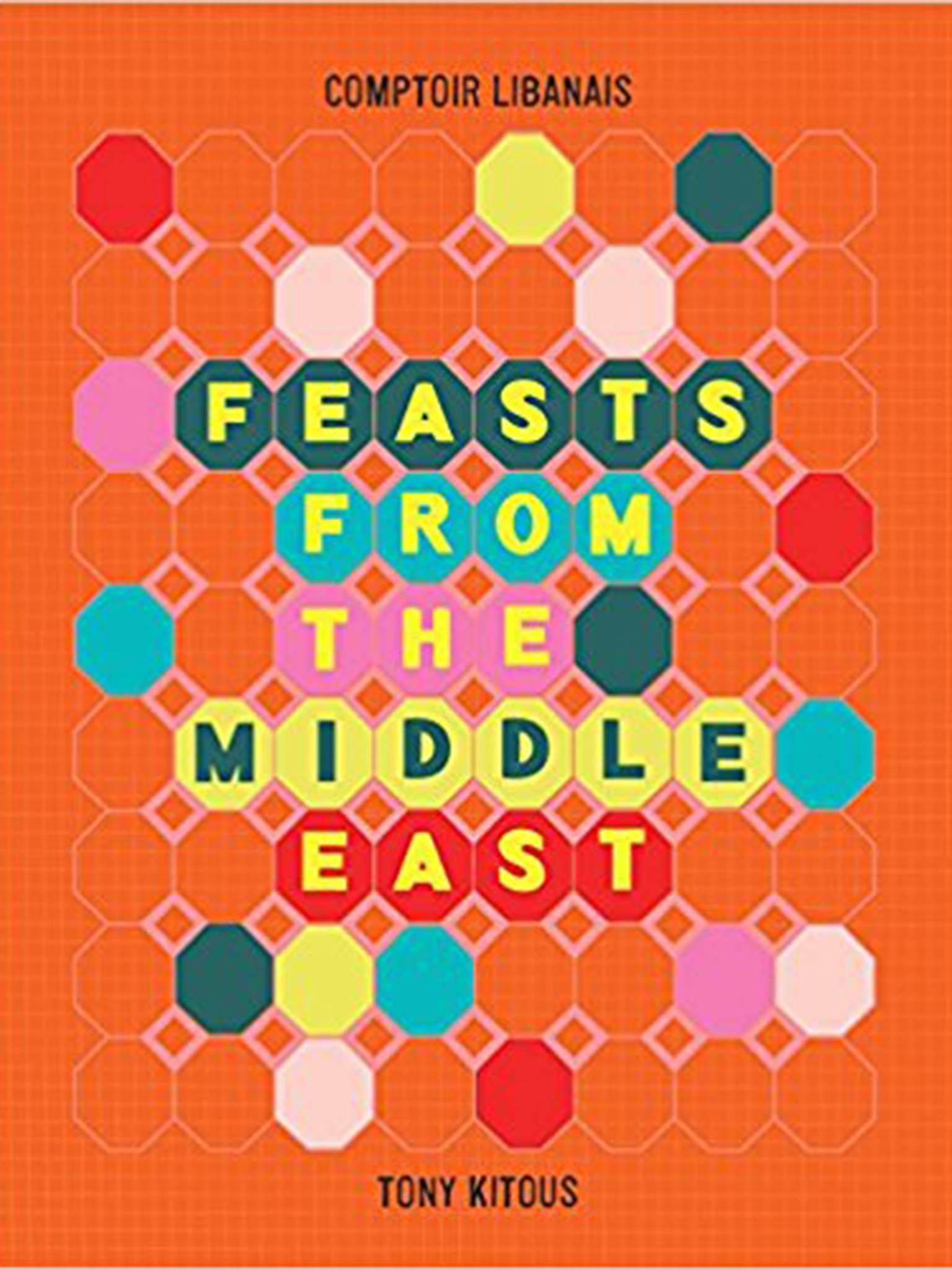'Feasts from the Middle East' cookbook: Recipes from za’atar-crusted halloumi to braised okra
Communal cooking and eating is a pillar of Middle Eastern cuisine, but when it’s as good as Tony Kitous’s slow-cooked lamb or za’atar-crusted halloumi, you won’t want to share

Your support helps us to tell the story
From reproductive rights to climate change to Big Tech, The Independent is on the ground when the story is developing. Whether it's investigating the financials of Elon Musk's pro-Trump PAC or producing our latest documentary, 'The A Word', which shines a light on the American women fighting for reproductive rights, we know how important it is to parse out the facts from the messaging.
At such a critical moment in US history, we need reporters on the ground. Your donation allows us to keep sending journalists to speak to both sides of the story.
The Independent is trusted by Americans across the entire political spectrum. And unlike many other quality news outlets, we choose not to lock Americans out of our reporting and analysis with paywalls. We believe quality journalism should be available to everyone, paid for by those who can afford it.
Your support makes all the difference.Za’atar-crusted halloumi – halloumi bil za’atar
When you’re making a big spread of dishes for a mezze, it’s good to have some that are simple to make but still full of flavour. This one ticks these boxes. It’s made by coating slices of halloumi in the spice blend za’atar (made from thyme, sesame seeds, sumac and salt), then baking them until golden. They are delicious! Plus, if you fancy garnishing them with a little extra something, dot each piece with rose petal jam.
Serves 6
250g block of halloumi
Olive oil, for brushing
4-5 tbsp za’atar
A little rose petal jam, to serve
Preheat the oven to 220C/200C fan/gas mark 7. Cut the halloumi into 12 slices. This can be tricky, so I cut the block through the middle first, then cut each half into six slices.
Brush each slice with olive oil. Scatter the za’atar over a plate and press the slices in it until they’re all covered. Spread them out on a lightly oiled baking sheet and bake for 8 minutes. Serve with a little rose petal jam on each slice.

Slow-cooked shoulder of lamb – kataf ghanam meshwy
We’ve been serving this in our restaurant for more than 18 years now and it’s so good, so popular, that I don’t think we’ll ever take it off the menu. In our culture we don’t serve our meat pink or medium; it’s always well done. So in this recipe the joint is cooked until crispy on the outside, moist on the inside and soft enough to be shredded with a fork.
This recipe really sums up what this book is all about – layers of flavour in one huge feast of a dish, brought to the table accompanied by a wonderful array of sides to complement it.
Serves 4
For the marinade
½ onion, roughly chopped
3 garlic cloves
½ bunch of coriander, roughly chopped
20g root ginger, chopped
¼ tsp cumin
½ tsp ras el hanout
¼ tsp cinnamon
¼ tsp turmeric
¼ tsp Lebanese seven spice mix (paprika, pepper, cumin, cassia, cloves, coriander seed, cardamom and nutmeg)
1 tsp salt
¼ tsp white pepper
½ tsp black pepper
50ml vegetable oil
2-2.5kg shoulder of lamb, bone in
For the sauce
25ml vegetable oil
25g butter
½ red onion, chopped
1 carrot, chopped
2 garlic cloves, chopped
4-5 sprigs of thyme
2 tbsp tomato purée
400g tin chopped tomatoes
Small handful of coriander, chopped
Small handful of flat-leaf parsley, chopped
For the dried fruit
4 each dried apricots, dried figs, dates and prunes
Handful of golden raisins
1 cinnamon stick
2 whole star anise
1 tsp rose water
2 tbsp honey
For the rice
1 tbsp vegetable oil
½ onion, finely chopped
150g lamb mince
1 tsp salt
½ tsp black pepper
Good pinch of Lebanese seven spice mix
1 tsp ras el hanout
200g basmati rice
25g toasted mixed nuts
Handful of fresh mint leaves
To serve
Greek yoghurt
Harissa
Toasted sesame seeds
Up to two days before you serve the lamb, marinate the shoulder. Put the onion, garlic, coriander, root ginger, spices, salt, peppers and oil into a mini blender and whizz to make a paste. Put the shoulder into a large sealable container and rub the paste all over it. Cover and chill for at least 24 hours and up to 48 hours.
Take the lamb out of the fridge so that it comes up to room temperature – if it’s too cold, it will take longer to cook. When you’re ready to cook it, preheat the oven to 220C/200C fan/gas mark 7. Put the lamb in a roasting tin and roast in the oven for 20 minutes until it has coloured on all sides.
While the lamb is cooking in this short blast of heat, make the sauce. Heat the oil and butter in a medium saucepan and saute the onion, carrot and garlic for 10 minutes over a medium heat until starting to soften and turn golden. Stir in the thyme sprigs, tomato puree and the tin of tomatoes, then fill the tin with hot water twice (making about 800ml of water in total) and pour that into the pan, too. Stir in the coriander and parsley, and bring to the boil. Simmer, half covered with a lid, for 15 minutes. Blend until smooth using a hand blender.
When the lamb has cooked for 20 minutes, take it out of the oven and pour the sauce over it. Cover the tin tightly with foil, reduce the temperature to 170C/150C fan/gas mark 3 and return the lamb to the oven. Cook for about 3 hours until very tender. After each hour, remove the tin to check the meat and pour in 500ml boiling water, stirring it into the sauce. Turn the shoulder over, and spoon the sauce all over it. You’ll know it’s ready when you can push your finger through the side of the shoulder easily because the lamb has become very tender.
The next step is to prepare the fruit to go on top of this dish. Put all the dried fruit into a small saucepan, add the cinnamon, star anise, rose water and honey and enough cold water to just cover the fruit. Cover the pan with a lid and bring to a simmer. Simmer for 10-15 minutes to allow the fruit to plump up. Set aside to cool.
About 45 minutes before the lamb will be ready, cook the rice. Heat the oil in a medium saucepan and saute the onion for 5-8 minutes. Add the lamb mince, breaking it down with a spoon so it browns evenly, then stir in the spices and seasoning. Cook for about 1 minute, then stir in the rice. Once the rice is coated with oil and mixed into the spiced onion and lamb mixture, cover with 500ml boiling water. Put a lid on the pan, bring the liquid to the boil, then turn the heat down low and simmer for 10-12 minutes. Turn off the heat under the pan and set aside.
When the lamb is ready, take the roasting tin out of the oven and strain off the sauce. Keep it warm. Take a large platter and spoon the rice all the way round the edge. Lift the lamb into the middle. Arrange the dried fruit around it, then scatter the nuts and mint over the top. Serve with the warm sauce, yoghurt, harissa and a sprinkling of toasted sesame seeds.
Tony’s Tip: The lamb will be at its best if you marinate it first for at least a day, and is even better if you marinate it for two days. As there’s quite a bit of work involved in putting this together, I also suggest that you make the sauce (which is poured over the lamb during roasting) at the same time, then seal it in a container and chill it. You can cook the dried fruit in advance, too, and set it aside at room temperature in a covered container.

Braised okra with tomato sauce – bamia bil zeyt
Okra is very like Marmite, isn’t it? Some of my friends love it and some hate it. And I have to admit I never liked the texture when I was little. I love it now, though, and this is a very handy mezze dish to know how to cook, especially if you keep a bag of frozen baby okra in your freezer. I find that the smaller okra have a less slimy texture than the larger ones, plus if you stir-fry them first until golden, they stay tender. They’re still delicate, though, so when you’re making this, try not to stir the okra too hard or they’ll start to break up.
Serves 4-6
1kg tomatoes
3 tbsp olive oil
1kg baby okra, thawed if frozen
1 onion, chopped
10 garlic cloves, chopped
2 tbsp tomato puree
1 tsp salt
½ tsp black pepper
100ml water
Handful of coriander, chopped, plus extra to garnish
Extra-virgin olive oil, to drizzle
Start by skinning the tomatoes. Cut a cross in the top and bottom of each one, then put them into a large bowl. Pour over enough boiling water to just cover, then leave for about 1½-2 minutes. Drain the tomatoes and rinse in cold water. Carefully peel off and discard the skins. Chop the tomatoes. Heat 1 tablespoon of olive oil in a large frying pan and fry the okra in two batches until just golden, tossing every now and then.

Tip into a bowl as you cook each batch. Pour the remaining oil into a large saucepan and heat gently. Stir in the onion and garlic, and saute over a medium heat for 8-10 minutes until starting to turn golden.
Add the chopped tomatoes, tomato puree, salt and black pepper, and return the okra to the pan. Pour in the water. Stir all the ingredients together, cover with a lid, then bring to a simmer and cook for 10 minutes. Stir in the coriander and cook over a low heat for a minute or two more and it’s done. Garnish with extra coriander and a drizzle of extra-virgin olive oil.
‘Feats from the Middle East’ by Tony Kitous. Published by HQ (£20)
Join our commenting forum
Join thought-provoking conversations, follow other Independent readers and see their replies
Comments